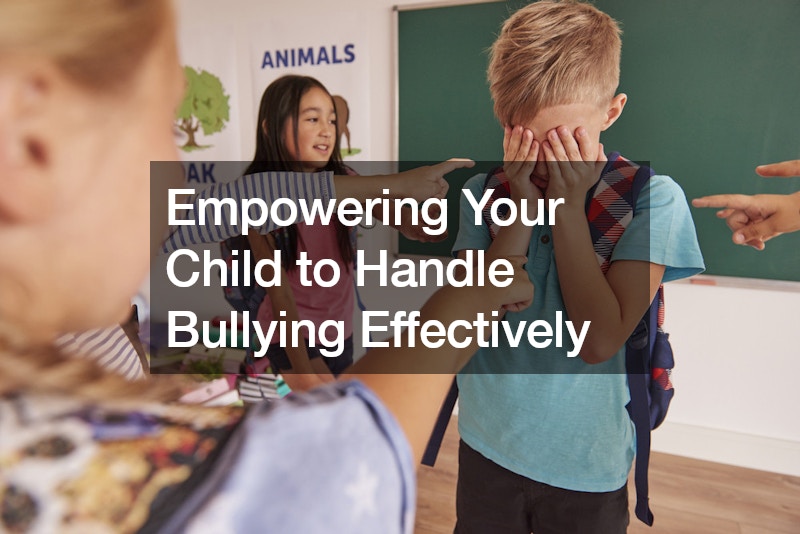Bullying can be a traumatic experience for a child, impacting their self-esteem and sense of safety. As a parent, it’s natural to want to swoop in and fix the situation. However, the most empowering approach lies in equipping your child with the skills to handle bullying effectively on their own. Here are five key steps to guide you:
- Gather Information: Before taking action, understand the situation. Talk to your child calmly and openly.
Is the bullying physical, verbal, or social exclusion? Does it happen online or in person? Knowing the specifics helps determine the severity and the best course of action. If your child feels physically threatened, report the incident to the school authorities or the police immediately.
- Stay Calm, Don’t React: It’s understandable to feel anger or fear when your child is being bullied. However, overreacting can escalate the situation. Reassure your child that you’re there for them and that you’ll work together to address the issue.
- Empower, Don’t Rescue: While your instinct might be to shield your child from the bully, this creates dependence. Instead, focus on building their social and emotional resilience. Consider enrolling them in a trauma healing workshop. These workshops can help children process negative experiences, develop coping mechanisms, and build confidence. Additionally, teach them assertiveness skills. Role-play different scenarios so your child feels prepared to respond calmly and firmly to the bully.
- Stay Calm and Kind: Bullies thrive on emotional reactions. Encourage your child to stay calm even in the face of provocation. Remind them that words only have power if they react to them. Often, the lack of a response can disarm the bully, leaving them confused and unmotivated.
- Rehearse for Success: Preparation is key. Practice different bullying scenarios with your child at home. Help them develop a repertoire of calm and kind responses. Role-play walking away, using humor to deflect, or simply stating “Stop bullying me” in a firm but unemotional voice.
- Remember, this process takes time. Don’t get discouraged if the bullying doesn’t stop immediately. Consider enrolling your child in a social skills development program or a team sport that can further build their confidence and resilience.
Building a Support System:
Beyond these immediate steps, address the root cause of the bullying. Is there something about your child that makes them a target? Is there a lack of social inclusion? If so, explore ways to help them build a strong support network of friends. Talk to the school counselor about creating a safe space for your child and their peers.
Self-Care for Parents:
Supporting a child facing bullying can be emotionally draining for parents. Don’t neglect your own well-being. Seek support from your partner, family, or friends. Consider joining a trauma healing workshop for parents to learn coping mechanisms and build resilience alongside your child.
By empowering your child with the right tools and support, you can help them navigate bullying situations with confidence and build the resilience they need to thrive, not just now, but throughout their lives.
.





